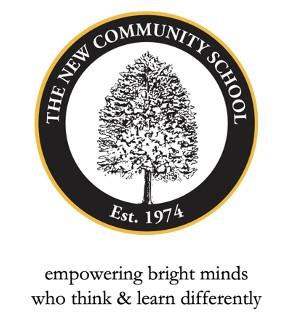














• Obstacles to learning vocabulary in students with dyslexia and language learning difficulties
• Nancy Hennessy’s framework for vocabulary instruction
Targeting language weaknesses:
• The Simple Routine – Phonology- Orthography-Semantics
• The Complex Routine – Build connections - words to experiences
• Questions










Let’s take a walk down memory lane.

Think back to when you were a kid.
What do you remember about vocabulary instruction?





















• Have difficulty with word-reading accuracy and fluency
• Learn fewer words from reading than good readers (though some learn words through oral language due to strong listening comprehension)
• May have underlying problems with phonological processing and verbal working memory that aid in storing newly learned words
• Struggle with language development and understanding verbal language
• May have auditory processing difficulties that impact understanding of oral language


• Learn fewer words than peers when exposed to the same oral language experiences
*Additional Factors:
Attention Deficit, Processing Speed, Working Memory, etc.












Intentional Instruction
Incidental on Purpose Instruction
Intentional Independent Word Learning Strategies Instruction
• Word Choice
• Principles of Instruction
• Instructional Routines
• Processing & Practice Activities
• Structured Point of Contact Teaching
• Structured Teacher-Student Talk
• Structured Shared Reading
• Structured Independent Reading
• Using the Dictionary
• Using Context Clue
Ex: compassionate
• Using Morphemic Analysis
Ex: immortal
Purposeful Activities


 ©️2011 Nancy Hennessy
Word Consciousness
Word Consciousness
Word Consciousness
©️2011 Nancy Hennessy
Word Consciousness
Word Consciousness
Word Consciousness





 ©️2020 Nancy Hennessy
©️2020 Nancy Hennessy
Tier 1 Words
High frequency in SPOKEN words
Tier 2 Words
High frequency in WRITTEN words Used across academic subjects

Ex: happy, cat, bed, spaghetti, dog, communicate, situation
Ex: derive, evoke, eradicate, absurd, dignity
Tier 3 Words
DOMAIN specific Science/Social Studies Math Vocabulary
Ex: density, tundra, photosynthesis, suffrage, monarchy








 Nancy Hennessy
Nancy Hennessy
Word Page Never Met (have not seen or heard before) Met (see or heard occasionally but do not really know)
p. 105
Amalgam




Friends (hang out together, know some things)
BFF’s (best friends forever; know everything)
Nancy Hennessy


Explicit direct instruction
Multisensory Instruction
Significant repetition and opportunities to apply new knowledge




Phonology – the sounds of the spoken word - Pronunciation of words
Ortho = “correct” Graph = “writing” Othography = correct writing
Semantics – the meaning of words
Phonology:
We hear a sequence of sounds

Orthography: Spelling of sound sequences matched to stored sounds +


Semantics:
Definition and examples of words +

We cement the phonological aspects of a word in the student’s mind when we tie the pronunciation of a word to its spelling.





Step 1

Step 2
Pronounce the target word and tie the pronunciation to the spelling. (Discuss structure and/or ask questions about the syllable patterns or morphology) Use chorale repetition in unison and individually as appropriate
Step 3
Ask student to repeat
Step 4
Explain the meaning of the word in everyday language
Provide examples from context and other situations. Ask students for examples. Use hand gestures to support working memory and language processing.



Step 5
Say, spell, and write the word and ask student to do the same in notebook or on flashcards




Step







A combination or blend of 2 or more things.









The dentist fills your cavity with a blend of mercury and silver.
You are listening to your parents’ favorite 70s, 80, 90s radio station.
The dentist fills it with an____.


You decide to make trail mix from scratch.
You watch a school performance that blends dance, singing, and acting.
You hear an______________ of music.
The potluck supper had a combination of foods from macaroni and cheese to zucchini casserole.
You create an ___________ of peanuts, raisins, and M&M’s.
You enjoy an __________of entertainment.

You tried an _________ of foods at the potluck supper.




Practice
Practice word usage in varied situations

Build
Build connections to other words
Use
Make
Use visuals, hand gestures (representing meaning in other multisensory ways)
Make connections to morphology (roots, prefixes, suffixes)



“The Complex Routine provides a rich understanding of the word through multiple opportunities to build connections between words and experience.”
Nancy Hennessy




 Nancy Hennessy The Reading Comprehension Blueprint
Nancy Hennessy The Reading Comprehension Blueprint




































Teacher- and Student-Made Visuals for Vocabulary








What is a lexicon?

• It is our own mental dictionary – the part of our long-term memory that is devoted to word knowledge
• So, how do we build a robust lexicon?








d-u-c-k




2 legs
2 wings



 Blue Jay Mallard
Blue Jay Mallard








 AIM Academy Vocabulary Training Module
AIM Academy Vocabulary Training Module

 AIM Academy Vocabulary Training Module
AIM Academy Vocabulary Training Module












New AI Graphing tool for Semantic Maps: https://instagraph.ai/
You have to register with a google account.
AI will take a prompt and create visuals for relationships between words and concepts.





































“ universe.”- Johann

playwright, novelist















1.They involve clusters of related words.
2.They encourage students to categorize.
3.Discussion connects new word to new contexts and prior knowledge




1.Day 1: Use the Simple Routine to link phonology, orthography, and semantics to create a power chain link in long-term memory
2.Day 2 and beyond: Use the Complex Routine to give multiple exposures to words in variety of contexts through active engagement
Active Engagement Leads to Powerful Results:
• Efficient storage for long-term retrieval
• Nuanced understanding of words
• Better word choice in writing
















